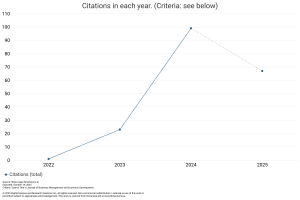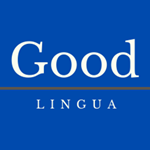A Discourse Network Analysis: How are Freelancers in Indonesia Portrayed?
DOI:
https://doi.org/10.59653/jbmed.v2i01.556Keywords:
Discourse network analysis, Freelancer, Electronic news, Value proposition, Pro and con statementAbstract
This research focuses on the freelancer policy published in the electronic daily, Kompas, from 2003 to 2022 with a Discourse Network Analysis approach. This form of research includes qualitative research. The technique used for data collection is library research. The data analyzed is secondary data, namely in the form of online news articles on the Kompas.com portal. There are 98 pro and con statements. Data analysis using DNA Analyzer. It was obtained that the economic value of pro statements was 28 statements and there were 10 counter statements. In the autonomy value, there are 27 pro statements and 4 counter statements. The value of work-life balance has 18 pro statements and 1 counter statement. There are 4 social values for pro statements and 3 counter statements. There are 6 pro statement development values and 1 counter statement, then visualized using the Visone application. The research results show that there are six value propositions for daily freelancers, there is only one value that is not discussed, namely hedonic value. Regarding economic value, the focus of the discussion focuses on holiday allowances for freelancers. Meanwhile, the autonomy value discussed is freelancers who have no bargaining value. In terms of social values, discussions on the recruitment of freelancers still experience many obstacles, thus triggering conflict. Next, the balance value discusses daily freelancers who are forced to work outside company working hours. Lastly, the development value discusses the large number of daily freelancers in Indonesia.
Downloads
References
Andersson, J. & Zbirenko, A. (2014). Effect of Organizational Structure, Leadership and Communication on Efficiency and Productivity: A Qualitative Study of A Public Health-care Organization. Bachelor Thesis. Umeå School of Business and Economics.
Anggrian, W. & Sumarlin, A. (2016). Pengaruh Komitmen Tenaga Kerja Lepas terhadap Motivasinya dalam Perusahaan Keluarga di Sektor Informal. Jurnal Manajemen Teknologi, 15(2): 139153.
Anggriani, I., & Saputra, A. (2019). Analisis Perbedaan Produktivitas Kerja Karyawan Tetap, Kontrak Dan Pekerja Harian Lepas (PHL) di PDAM Kota Bengkulu. EKOMBIS REVIEW: Jurnal Ilmiah Ekonomi dan Bisnis, 7(1), 70–79.
Arifianto, C., & Vallentino, M. (2022). A Study and Review of Freelancer Value Proposition. Journal of Research in Business, Economics, and Education, 4(1), 50-62.
Chadwick, C. (2017). Toward A More Comprehensive Model of Firms’ Human Capital Rents. Academy of Management Review, 42, 499–519.
Dwinda, A. (2021, April 23). Mengenal VUCA: Volatility, Uncertainty, Complexity, Ambiguity). GlintsforEmployers. https://employers.glints.com/id-id/blog/mengenal-vuca-volatility-uncertainty-complexity-ambiguity/.
Eriyanto. (2014). Analisis Wacana, Pengantar Analisis Media. Yogyakarta: PT LKiS Pelangi Aksara.
Firdasanti, A., Dzulkirom, N., Savirani, A., Khailany, A., & Sitompul, T. (2021). Mahasiswa dan Gig Economy: Kerentanan Pekerja Sambilan (Freelance) di Kalangan Tenaga Kerja Terdidik, Jurnal PolGov, 3(1), 195-234.
Fisher, D., Waggle, J., & Leifeld, P. (2013). Where Does Political Polarization Come from? Locating Polarization within the US Climate Change Debate. American Behavioral Scientist, 57(1), 70–92.
Garnett, M. (2014). The Autonomous Life: A Pure Social View. Australasian Journal of Philosophy, 92(1), 143–158.
Hendryadi, T. & Zannati, R. (2019). Metode Penelitian: Pedoman Penelitian Bisnis dan Akademik. Jakarta: Lembaga Pengembagan Manajemen dan Publikasi Imperium (LPMP Imperium).
Juanda, Y. , Alfiandi, B., & Indraddin, I. (2019). Strategi Bertahan Hidup Buruh Tani di Kecamatan Danau Kembar Alahan Panjang. Jurnal Ilmu Sosial dan Ilmu Politik UIN Sunan Gunung Djati Bandung, 9(2), 514-530.
Kamilah, H., Yanto, & Sari, S. (2020). Fenomena Gaya Hidup Ala Selebgram pada Mahasiswa di Instagram. Jurnal Professional FIS UNIVED, 7(2), 61-72.
Kriyantono, R. (2020). Teknik praktis riset komunikasi kuantitatif dan kualitatif disertai contoh praktis Skripsi, Tesis, dan Disertai Riset Media, Public Relations, Advertising, Komunikasi Organisasi, Komunikasi Pemasaran. Jakarta: Prenadamedia Group.
Leifeld, P. (2020). Policy Debates and Discourse Network Analysis: A Research Agenda. Politics and Governance, 8(2), 180-183.
Leifeld, P. & Haunss, S. (2012). Political Discourse Networks and The Conflict Over Software Patents in Europe. European Journal of Political Research. 51(3), 382-409.
McKinsey (2020). How Covid-19 Has Pushed Companies Over the Technology Tipping Point - And Transformed Business Forever –. Mckinsey. www.mckinsey.com.
Moleong, L. (2017). Metode Penelitian Kualitatif, cetakan ke-36, Bandung: PT. Remaja Rosdakarya Offset.
Nasrudin, A. (2019, Juni 28). Affiliate Network. Smartco.com. https://cerdasco.com/network-affiliate/.
Nawaz, Z., Zhang, J., Mansoor, R., Hafeez, S., & Ilmudeen, A. (2020). Freelancers as part-time employees: Dimensions of FVP and FJS in E- lancing platforms. South Asian Journal of Human Resources Management, 7(1),34-60.
Siagian, T. (2020). Mencari Kelompok Berisiko Tinggi Terinfeksi Virus Corona dengan Discourse Network Analysis. Jurnal Kebijakan Kesehatan Indonesia: JKKI, 9(2), 98-106.
Situmorang, A. (2021, April 29). 4 Kunci Penentu Keberhasilan Perusahaan di Masa New Normal. Merdeka. https://www.merdeka.com/uang/4-kunci-penentu-keberhasilan-perusahaan-di-masa-new-normal.html.
Sugiyono. (2017). Metode Penelitian Kuantitatif, Kualitatif, dan R&D. Bandung: CV Alfabeta.
Sundalangi, Y. (2018). Tinjauan Yuridis Pekerja Freelance Berdasarkan Prinsip Keadilan. Tadulako Law Review, 3(1), 40-56.
Tampongangoy, G. C., Pangemanan, S., & Kimbal, A. (2019). Rekrutmen Tenaga Harian Lepas di Kabupaten Minahasa Tenggara (Studi di Sekretariat Daerah). Jurnal Eksekutif, 3(3), 1-10.
Warfield, K. (2015). The Model, The #Realme, and The Self-conscious Thespian: Digital Subjectivities, Young Canadian Women, and Selfies. The International Journal of the Image, 6(2).
Downloads
Published
How to Cite
Issue
Section
License
Copyright (c) 2023 Chandra Arifianto, Rahadyan Tajuddien, Endang Kustini, Syahrina Putri

This work is licensed under a Creative Commons Attribution-ShareAlike 4.0 International License.
Authors who publish with this journal agree to the following terms:
- Authors retain copyright and grant the journal right of first publication with the work simultaneously licensed under a Creative Commons Attribution-ShareAlike that allows others to share the work with an acknowledgement of the work's authorship and initial publication in this journal.
- Authors are able to enter into separate, additional contractual arrangements for the non-exclusive distribution of the journal's published version of the work (e.g., post it to an institutional repository or publish it in a book), with an acknowledgement of its initial publication in this journal.
- Authors are permitted and encouraged to post their work online (e.g., in institutional repositories or on their website) prior to and during the submission process, as it can lead to productive exchanges, as well as earlier and greater citation of published work (See The Effect of Open Access).





























